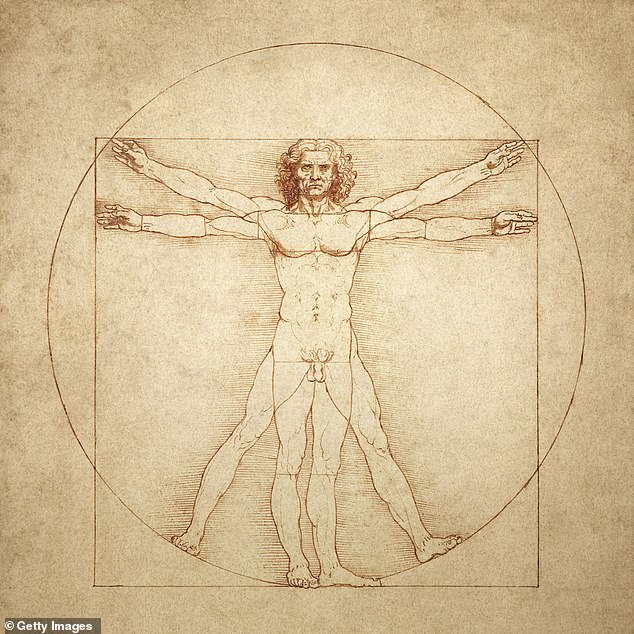
Da Vinci’s Vitruvian Man Geometric Secret Cracked After 500 Years by Dentist
Leonardo da Vinci’s “Vitruvian Man” Code Solved by Dentist’s Discovery
Over 500 years ago, Leonardo da Vinci sketched the iconic Vitruvian Man, blending art, anatomy, and mathematics into a masterpiece. Now, a London-based dentist claims to have cracked its geometric secret.
Dr. Rory Mac Sweeney, a dentist with a genetics background, discovered that an “equilateral triangle” mentioned in da Vinci’s notes—drawn between the figure’s legs—unlocks the design. This triangle mirrors Bonwill’s Triangle, a key structure in dental anatomy that optimizes jaw function.
[Image 1: Vitruvian Man with labeled triangle between legs. Caption: The equilateral triangle in da Vinci’s sketch correlates with natural design principles.]
The triangle creates a ratio of 1.64 between the square and circle framing the figure. Astonishingly, this number (close to 1.633) is a recurring “blueprint” in nature—found in crystal structures, sphere packing, and human anatomy, including the jaw and skull. “Leonardo sensed our bodies follow the same math governing the universe,” Dr. Sweeney explained.
[Image 2: Comparison of Bonwill’s Triangle in a jaw X-ray and da Vinci’s sketch. Caption: The dental triangle aligns with the geometric code in Vitruvian Man.]
The study, published in the Journal of Mathematics and the Arts, positions the artwork as both art and scientific prophecy. Da Vinci’s understanding of this ratio predates modern science by centuries. His drawing solved a puzzle posed by Roman architect Vitruvius, who theorized the human body could fit in a circle and square but lacked the math to prove it.
[Image 3: Close-up of da Vinci’s notes and geometric diagrams. Caption: Da Vinci’s manuscripts hint at his deep exploration of geometry.]
While the Vitruvian Man (c. 1490) is famed for its beauty, Dr. Sweeney emphasizes its scientific genius. Previous research found modern humans match 90% of its proportions, though traits like arm span and chest size differ slightly.
[Image 4: Mona Lisa at the Louvre. Caption: Da Vinci’s artistry extended beyond anatomy to timeless works like the Mona Lisa.]
Who Was Leonardo da Vinci?
The ultimate Renaissance polymath, da Vinci (1452–1519) excelled in art, engineering, and science. His inventions—from helicopter concepts to anatomical studies—reveal a mind centuries ahead of its time. Masterpieces like The Last Supper and Salvator Mundi (which sold for $450 million in 2017) cement his legacy.
[Image 5: Da Vinci’s sketches of machinery. Caption: His notebooks reveal groundbreaking ideas in engineering and anatomy.]
Dr. Sweeney’s discovery underscores da Vinci’s belief in a universal design connecting humanity and nature—a testament to his enduring genius.


